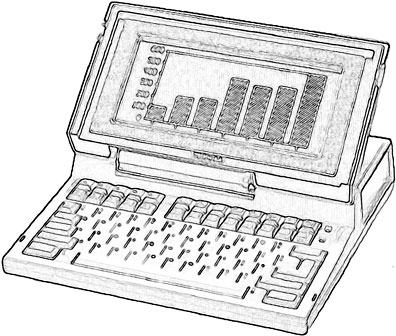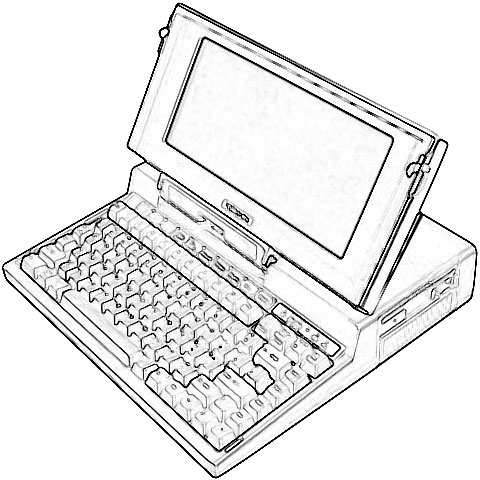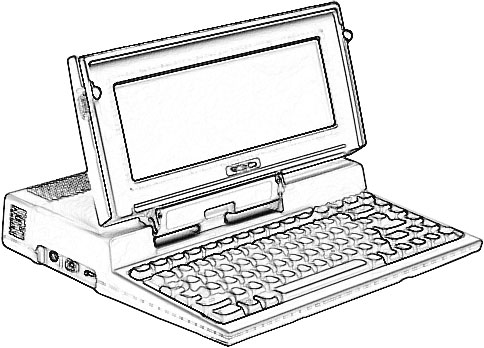When IBM introduced its first PC in August 1981, it created a new standard for desktop computers in the business world. However, IBM didn’t address portability, which created an opening for Compaq and Toshiba to enter the PC market. This is Toshiba’s story.
 T1100
T1100
Where Compaq entered the PC compatible market with a 28 lb. suitcase-sized luggable computer in 1983, Toshiba created the PC laptop market with the introduction of its T1100 in 1985.
The T1100 matched the specs of the 1981 IBM PC with its 4.77 MHz 80C88 CPU and monochrome text display with 25 rows of 80 characters. The T1100 also supported 640 x 200 monochrome CGA graphics, although very spread out due to the wide aspect ratio of the laptop’s display.
One unusual feature of the T1100 was a double row of function keys between the main keyboard and the screen.
The T1100 shipped with 256 MB of memory and could be expanded to 640 MB, the same ceiling as the IBM PC. It shipped with MS-DOS 2.11 and used a 3.5″ floppy drive that could store 720 KB of data on a double-sided double-density diskette. For compatibility with desktop systems, Toshiba also offered an external 5.25″ floppy drive. An internal 14.4 modem was optional.
The T1100 was 12.2″ wide, 12″ deep, and 2.6″ thick. It weighed 9 lb. It could run up to 8 hours from its rechargeable battery.
 T1200
T1200
In 1987, Toshiba doubled the performance of its laptop, introducing the T1200 with a 9.54 MHz 80C86 CPU and making 1 GB of memory standard – the 384 KB above the standard 640 KB was available for use as a RAM Disk or Extended Memory. It was the first Toshiba laptop available with a hard drive (20 MB); it could also be purchased with two floppy drives.
The T1200 has only a single row of function keys at the top of the keyboard, not two like the T1100. MS-DOS 3.3 shipped with the computer.
 T1000
T1000
The 1987 T1000 was probably the model that cemented Toshiba’s place in laptop history, in no small part due to its $1,000 price point. Unlike most notebooks, the T1000 has MS-DOS 2.11 built into ROM, so it can boot from that instead of a hard drive or floppy disk.
The 6.4 lb. T1000 was no powerhouse with its 4.77 MHz 80C88 CPU and 512 MB of memory, but bootable built-in operating system meant avoiding the cost of a hard drive and not dealing with the floppy shuffle to switch between a DOS disk and a data disk. (Tandy also built MS-DOS into ROM in some of its 1000-series desktop computers.)
Further Reading
- Toshiba T1100, Center for Computing History
- Milestones: Toshiba T1100, Engineering and Technology History Wiki
- Jurassic Tech: Toshiba T1000 as the MacBook Air of 1987, Todd Ogasawara, 2011.12.28
- This Old Tech: The Toshiba T1000 Was My First Step Into the World of MS-DOS, Benj Edwards, PC World, 2015.11.06
Keywords: #toshibanotebook #toshibalaptop #toshibat1100 #toshibat1200 #toshibat1000
Short link: http://goo.gl/wp6Fxq

